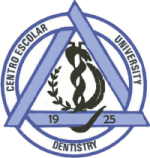Conscious Sedation For Dental Treatments
Conscious Sedation For Dental Treatments Explained
In spite of the dental technology that has made dentistry virtually pain-free, dental fear and anxiety still keep millions of patients away from the dental office every year. For these patients, local anesthesia is not enough to treat the psychological factors of their condition — a sedative is often needed to put them at ease during dental treatment. Conscious sedation is an excellent way to treat dental anxiety so your dentist can get to work on your teeth!
Conscious sedation dentistry allows you to enter a state of relaxation while staying awake during the procedure. Although you won’t feel any pain, you’ll be able to respond to your dentist’s questions and commands. As communication is key with any dentist-patient relationship, conscious sedation is an excellent option for fearful dental patients.
Dental Sedation in a Nutshell
There are several types of sedation dentistry used to treat different levels of dental anxiety, each putting you in varied states of relaxation:
Light Sedation — With minimal sedation, you are relaxed while remaining awake and alert.
Moderate Sedation — You will remain conscious during a procedure, but you probably won’t remember much about it. While you’re able to communicate, you may feel groggy and slur your words. Some patients do fall asleep with moderate sedation but can be easily woken back up.
Deep Sedation — This renders you either semi- or totally unconscious during your dental procedure, and does not usually fall under the category of conscious sedation. You will not regain consciousness until the drug wears off or is reversed, and recovery time takes longer.
Most forms of conscious sedation are considered “light” or “moderate” sedation. Surprisingly, conscious sedation is also referred to as sleep dentistry even though you remain awake during the procedure!
Not to Be Taken Lightly
Conscious sedation is considered relatively safe — but as with any medicine, there are risk factors. To ensure your safety, dental sedatives should only be administered by those with appropriate training. Your dentist will consider your health background when choosing a form of conscious sedation, so be sure to provide your dental office with your medical history and any medications you’re taking to avoid complications.
Conscious sedation can help you conquer your dental fears so you can get the work you need. Discuss your fears with your dentist — he or she will help you choose the right form of dental sedation for you.
Source= https://www.1800dentist.com/conscious-sedation/
Choose Your Administration
Inhalation Sedation — Nitrous oxide, or laughing gas, is considered a light form of dental sedation. Your sedation dentist will administer the nitrous oxide through a mask that’s placed over your nose. The gas is inhaled through the nose and expelled through the mouth. When the procedure is over, the nitrous oxide wears off almost immediately with minimal to no side effects or recovery time.



